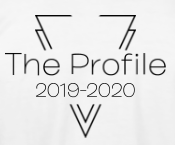The Dangerous Rabbit Hole…
November 12, 2021
Disclaimer! This article might be triggering to some audiences. This is not meant to diagnose anyone, this is for informational purposes. If you are worried about yourself or a loved one, please talk to a doctor.
Look at a cherry pop tart. Most of you will see a cherry pop tart, but some of you might see 204 calories or 20 minutes of jumping jacks. Constant worry about weight is the reality of eating disorders. There are so many different types of eating disorders, and all can be life-threatening and painful. Contrary to popular belief, eating disorders don’t necessarily mean intentional weight loss. Many people develop eating disorders for a sense of control.
Anorexia
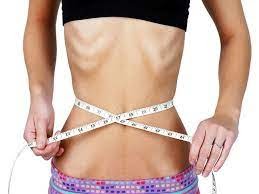
Anorexia nervosa, most commonly known as anorexia, is defined as “an eating disorder characterized by an abnormally low body weight, an intense fear of gaining weight and a distorted perception of weight” (Link). People with anorexia often incorrectly use diet pills, laxatives, diuretics (a pill that gets rid of salt in the body) and other items similar to them.
Anorexia is often linked with bulimia, anxiety, depression, self harm, and self-induced vomiting. These people often have flat moods and hide away from people who might try to help them. They will often work out intensively multiple times a week, and in some cases, multiple times a day. They may develop bad eating habits, such as chewing food to then spit it out, or only eat “safe” foods, often very low in calories.
Physical signs may include thin, brittle hair that comes out in chunks, insomnia, dizziness, dehydration, constant cold, among other things. Threats could include lack of menstruation for females, loss of testosterone for males, weaker bones, kidney issues, loss of muscle, fainting, and death.
Bulimia
Bulimia is “an eating disorder characterized by a cycle of bingeing and compensatory behaviors such as self-induced vomiting” (Link). People with bulimia also misuse diet pills, laxatives, diuretics, and other items along those lines.
Bulimia is also linked with anorexia and the previously mentioned illnesses. It shares many habits with anorexia, explaining why it’s common to have both anorexia and bulimia. Not like anorexia, people would not eat for long periods of time, binge eat (often out of control), then vomit to remove the food. They also might drink large amounts of water to stop the pain, often called “water fasting”.
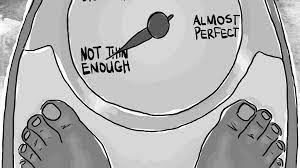 Bulimia can cause people to do “body checks”, in which they look at their body to see if “everything is in check”. This can also cause body dysmorphia, where a person will see their body entirely different from the rest of the word. They can get chills, dry nails and skin, wounds won’t heal easily, and cause the throat to be sore and rough.
Bulimia can cause people to do “body checks”, in which they look at their body to see if “everything is in check”. This can also cause body dysmorphia, where a person will see their body entirely different from the rest of the word. They can get chills, dry nails and skin, wounds won’t heal easily, and cause the throat to be sore and rough.
Important to note, in some cases, people actually gain weight from this because the body stores more fat and energy because the body doesn’t know when it will be fed again.
Real Human Experiences
Blyth Baird is a young woman who suffered from both anorexia and bulimia, but thankfully recovered. She has talked about her struggles in poetry slams, one of which is called “When Fat Girl Gets Skinny”. To get some context by quoting her, “by the time I was sixteen, I had already experienced being clinically overweight, underweight, and obese”. She developed an eating disorder because she was overweight, and instead of getting her help, the people around her praised her. Even her own father “was so proud he started carrying my before and after photo”.
During this time, she became obsessed with her calorie intake, and even was proud of herself, saying she was proud that she was cold in a warm room. “How many more productive ways I could have spent my time today besides googling the calories in the glue of a US envelope”. To add onto her “praise”, she said “Why would I ever want to stop being hungry when anorexia was the most interesting thing about me?”. This is one example of an overweight person developing an eating disorder and to quote her exactly, “If you develop an eating disorder when you are already thin to begin with, you go to the hospital. If you develop an eating disorder when you are not thin to begin with, you are a success story”.
Jaiden Dittfach, or better known as Jaiden Animations, made a song about her experience with bulimia and anorexia. She developed them during college, where she would go through a cycle of eating as little as she could all day then binge-eating large amounts of food to then “removing” it. “Tunnel vision on the flaws” and “Check; arms back neck thighs suck it in and pinch my sides” show how toxic and obsessive her mind got, in which she wasn’t able to see how bad she was getting. Even when she was dealing with the illnesses, they noticed that “no one else seemed so obsessed with it”.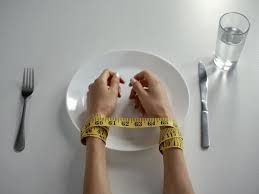
“Just because you know you’re colorblind doesn’t mean you can see the colors”, describing her experience of trying to recover, saying that even if you know you have an illness, that doesn’t mean you can fix it automatically. Relating to their anorexia, she felt guilty when she didn’t follow her routine, shown in several quotes, such as “just fill up on water and shame”, “convince myself I’m in control”, and “every calorie and failure”. Near the end of their song, she was explaining how she recovered, mainly explaining to “trust your body” and “…reach out to someone not like me”, explaining to reach out to people who don’t have an eating disorder.
Social Media Issues
Anorexia and bulimia have been incredibly misrepresented for the past few decades. They both have been –for lack of a better word– romanticized in social media and even encouraged to begin. Beginning is like falling into a rabbithole but instead of teacups and pink and purple cats, it’s filled with water, diet pills, and gum.
Starting back in 2006, “thinspiration” has surfaced all over social media, pro-anorexia and pro-bulimia communities that encourage themselves and others to join. Most notable is the appearances of Tumblr blogs, consisting of “progress reports” which document weight loss, including “what I ate” and “before and after journey” photos. What makes everything worse is that these blogs and posts are still being used, now only hidden using a “Trigger Warning” system.
I decided to go on Tumblr and look up “thinspiration”. This search included pictures of unhealthily thin girls and “meal plans”, which was just trying to make soups, tea, and coffee with as little calories as possible. Another thing I noticed was a large amount of vent/poems about not eating and being embarrassed to go out in public. One I saw was a girl saying that her friends were lying to her about being thin because they don’t want her starving herself.
A movie created and directed by Marti Noxon called “To The Bone” is one abundant example of romanticizing anorexia. The plot is a young woman developing an eating disorder and in her recovery, she falls in love with a man. This movie heavily romanticizes anorexia and misrepresents it as a whole. As someone who has had issues with eating, this is incredibly frustrating and triggering to have something so serious be treated as a personality trait
Other Eating Disorders
Binge-Eating Disorder (BED)
Even though bulimia and anorexia are the most common eating disorders, there are many others. One of those is binge-eating disorder which is defined as “recurrent episodes of eating large quantities of food” (Link). Often linked to obesity, people with this disorder will eat uncontrollably until uncomfortable. This results in embarrassment in eating around others.
Guilt, depression, and disgust in self often follows after episodes of binging. Not similar to anorexia and bulimia, these people don’t misuse diet pills, laxatives, etc., nor include self-induced vomiting. These people often have random changes in their diets, such as all carbs, no carbs, no meat, no fish, vegan, vegetarian, etc.
Bigorexia
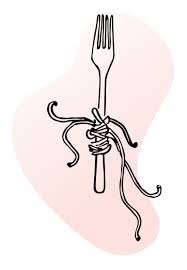 Bigorexia is defined as “obsession over his or her body being too small or underdeveloped and the subsequent drastic measures taken to increase muscle mass” (Link). Often referred to as the opposite of anorexia, these people have an obsession with going to the gym and getting muscle. Even though all genders can fall victim to this, it is most common in men. These people often have body dysmorphia and low self esteem.
Bigorexia is defined as “obsession over his or her body being too small or underdeveloped and the subsequent drastic measures taken to increase muscle mass” (Link). Often referred to as the opposite of anorexia, these people have an obsession with going to the gym and getting muscle. Even though all genders can fall victim to this, it is most common in men. These people often have body dysmorphia and low self esteem.
Often linked with OCD, these people put working out above school, work, sleep, etc. Sadly, many people abuse substances and steroids to try and satisfy their ideals. This eating disorder needs more research because many don’t believe this is real in the first place.
Orthorexia Nervosa
Often just called orthorexia, it is defined as “an obsession with proper or ‘healthful’ eating” (Link). Very similar to bigorexia, it is often linked with OCD and includes body dysmorphia. These people are constantly worried about what they eat to the point where it damages their health. Constant checking of labels and fear of eating something “unhealthy” is always a worry for someone dealing with this. Random changes in diets (similar to BED) are normal in this disorder.
When “pure” food is not available, intense anxiety often follows and if they are out in public, panic attacks and even early exits are common. Also related to bigorexia, there is very little research on this.
Sleep Eating Disorder (SED)
As guessed by the name, this disorder is “frequent episodes of out-of-control eating and drinking behaviors while in a state of sleep” (Link). Often linked with narcolepsy, sleepwalking, depression, and other eating disorders, this is eating while asleep with no memory of the event happening at all. While it can be developed with any age and/or gender, it is most common in teenage to mid twenties women.
This is very dangerous because these people could accidentally ingest dangerous materials, such as cleaning tools, chemicals, etc, or even hurt themselves just by making the food itself because these people can often use knives and sharp objects. Similar to both orthorexia and bigorexia, this has very little research on it.
Pica
Pica is an eating disorder defined as “eating items that are not typically thought of as food” (Link). Often linked with the autistic or schizophrenic, this is an eating disorder in which the people feel the need to eat non-food items. These people often eat hair, paint, nails, paper, tape, whatever isn’t normally food. It is very dangerous because it can cause tears in the stomach, esophagus, and intestines, along with ingesting chemical’s not meant to be eaten.
The most notable person to have this disorder is a man named Michel Lotito. He became recognized for commonly eating nails, bolts, glass, light bulbs, and even a plane at one point. He discovered at a young age that he had a thick lining in his stomach, thick enough to survive eating these dangerous items. Strangely, he refused to eat hard-boiled eggs because it gave him extreme heartburn. Even more strangely, he died at 57 of natural causes. Another person includes a young woman named Jennifer, where she was seen on “My Strange Addiction” being addicted to eating mattresses.
Personal Experiences
This next section is especially triggering. Please do not mistake this part as a instruction manual, to quote Baird once again
As a teenager, I have been subjected to body ideals. I know someone (who wishes to be anonymous) that has told me “I can only eat if I like my weight”. While I understand the struggle of the mindset, it’s eye opening to see it from a friend-to-friend perspective. Another one of my friends feels sick when they eat because they would go long periods of time without eating, and their body is so used to vomiting it after that it became a natural habit.
I, myself, have had issues with eating. I do not believe that I had ever had a full eating disorder, but I possibly had borderline bulimia and anorexia. I spent the entirety of 7th grade skipping breakfast and lunch, ate snacks to stop the pain, ate very little dinner, and then “removed” it later at night. I had a weight loss app on my phone, and my “goal” weight was 95 pounds. For back I even got to a point where I was working out on an empty stomach regularly. I would spend time before picking what I was eating to google calories and how many jumping jacks it would take to burn those calories. I would consider myself recovered from this, but once in a while, I’ll think about my calorie intake. This should never have to be a worry for anyone, especially an 11 year old.
How To Get Help
Eating disorders are easily one of the most dangerous mental illnesses, along with being one of the most misrepresented one as well. More information on eating disorders is always needed around the world. If you are worried you or a loved one has one of these illnesses, reach out to a doctor or call 844-493-8255.
For someone who is struggling, please reach out for help. It doesn’t hurt anyone and you can get control over your body again. There are so many different resources that can help you, so please stay safe. The weight loss isn’t worth it, I promise you.

